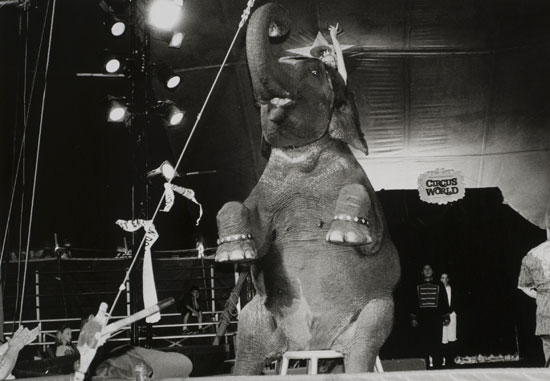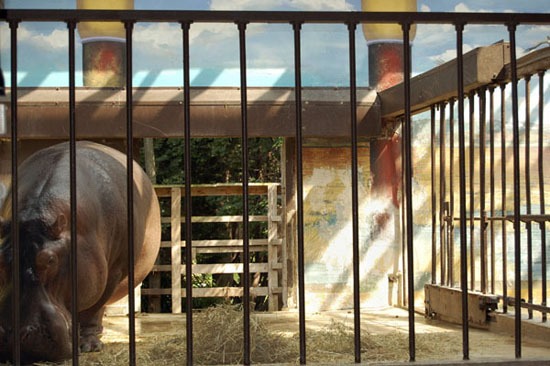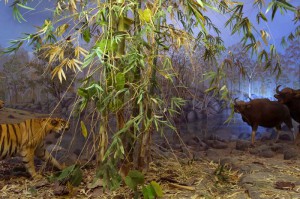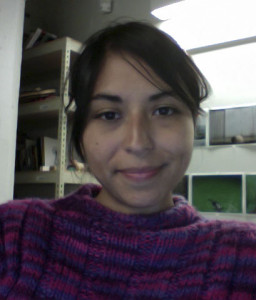On my first semester of art school at the University of Nebraska Lincoln, I remember Professor Dana Fritz showing Polluted New River by Robert Dawson. For a split second, the cloud-like foam floating on the river looked beautiful, but you quickly realized that the foam is pollution and not truly part of the ecosystem. The photograph spoke to me because it made me think of how we affect the natural world and it also made me ask – how can we better become part of the world?
It’s not a coincidence that I made work related to the environment. Part of my childhood was spent in Bogota, Colombia. Although Colombia has great fresh water reserves, I experienced a drought during the nineties that led to the “apagones” – moments when water and electricity were shut down for a period of time during the day. Memories such as, a school field trip to a dumpster site and the polluted smell from the Bogota River during road trips, also showed me firsthand how we affect the world around us. Therefore, Dawson’s photographs spoke to me because they reminded me of the impact we have on the environment.

The three photographs featured in the Environmental Impact exhibition initiates a conversation about how the natural world is shaped in circuses, zoos, and natural history museums. I didn’t grow up going to the circus, zoos or natural history museums. I was first drawn by being able to come close to wild animals and later realized the spaces were also part of the allure. For example, Untitled #3 is a photograph made in a circus tent. The elephant sits in a humanlike position surrounded by lights, trainers and the spectators’ hands. Happy was made at the Smithsonian National Zoo. Happy’s space included a painted background with columns and bright colors in a very “Egyptian” style, but the bars make it clear that there is a barrier between Happy and viewers. Two Tigers, the third photograph, is diorama from the Milwaukee Public Museum. The tigers’ bodies were shaped to appear in action and they are surrounded by fake bamboo plants to emulate the “real” wild and create the illusion of being in the wild with them.

I photographed in these places as a way to feel closer to nature without having to go too far from my house. The work was made in a span of ten years in which I moved often. As a matter of fact, Happy was photographed at the Smithsonian National Zoo shortly before we both moved to Milwaukee. I started my Master of Fine Arts program and Happy moved to the Milwaukee zoo in need of a new home since his space turned into an elephant habitat. I traveled to photograph the circuses because they didn’t have a permanent space in my town.

Looking back now, my interest in these places came from being wowed by the abundance of resources and the dichotomies that exists in them. Zoos and natural history museums paint backgrounds and construct environments idealizing the animal’s original habitat. At the same time, zoos and museums do their best to educate the public about the natural world, as well as teach about the importance of natural resources and conservation. Circuses, on the other hand, place animals outside of their environments into a spectacle world. All three places celebrate wonder and teach about human control over the natural world.
The works by Diana Sanchez featured above were on display in the traveling museum exhibition Environmental Impact, which closed at St. Mary’s College on May 1, 2016. A sequel is scheduled for January 5 to May 26, 2019 at the North Carolina Arboretum in Ashville, NC.
 Diana Sanchez is a graphic designer and artist based in Washington, DC. She is originally from Bogota, Colombia, but she also grew up in Costa Rica and Nebraska. Diana is currently working on a new series using video, photographs and mixed media to retell personal experiences about war, the environment and family stories. Her previous work explored our relation to the natural world in zoos, circuses and natural history museums.
Diana Sanchez is a graphic designer and artist based in Washington, DC. She is originally from Bogota, Colombia, but she also grew up in Costa Rica and Nebraska. Diana is currently working on a new series using video, photographs and mixed media to retell personal experiences about war, the environment and family stories. Her previous work explored our relation to the natural world in zoos, circuses and natural history museums.
Diana holds a Master of Fine Arts (2013) and a Master of Arts (2012) from the University of Wisconsin Milwaukee and a Bachelor of Fine Arts from the University of Nebraska Lincoln (2006).
This post is part of the MAHB’s Arts Community space –an open space for MAHB members to share, discuss, and connect with artwork processes and products pushing for change. Please visit the MAHB Arts Community to share and reflect on how art can promote critical changes in behavior and systems and contact Erika with any questions or suggestions you have regarding the new space.
MAHB-UTS Blogs are a joint venture between the University of Technology Sydney and the Millennium Alliance for Humanity and the Biosphere. Questions should be directed to joan@mahbonline.org
The views and opinions expressed through the MAHB Website are those of the contributing authors and do not necessarily reflect an official position of the MAHB. The MAHB aims to share a range of perspectives and welcomes the discussions that they prompt.